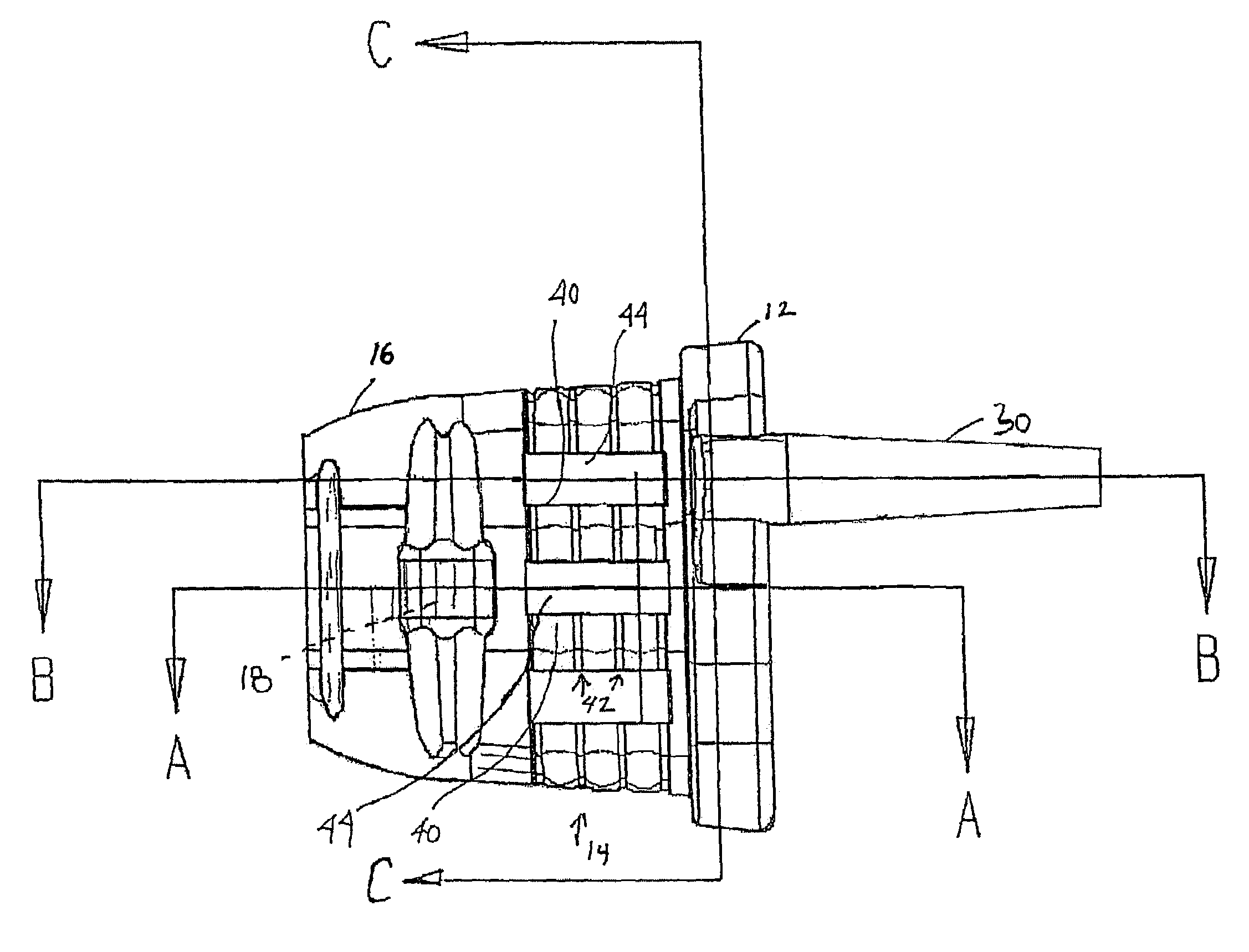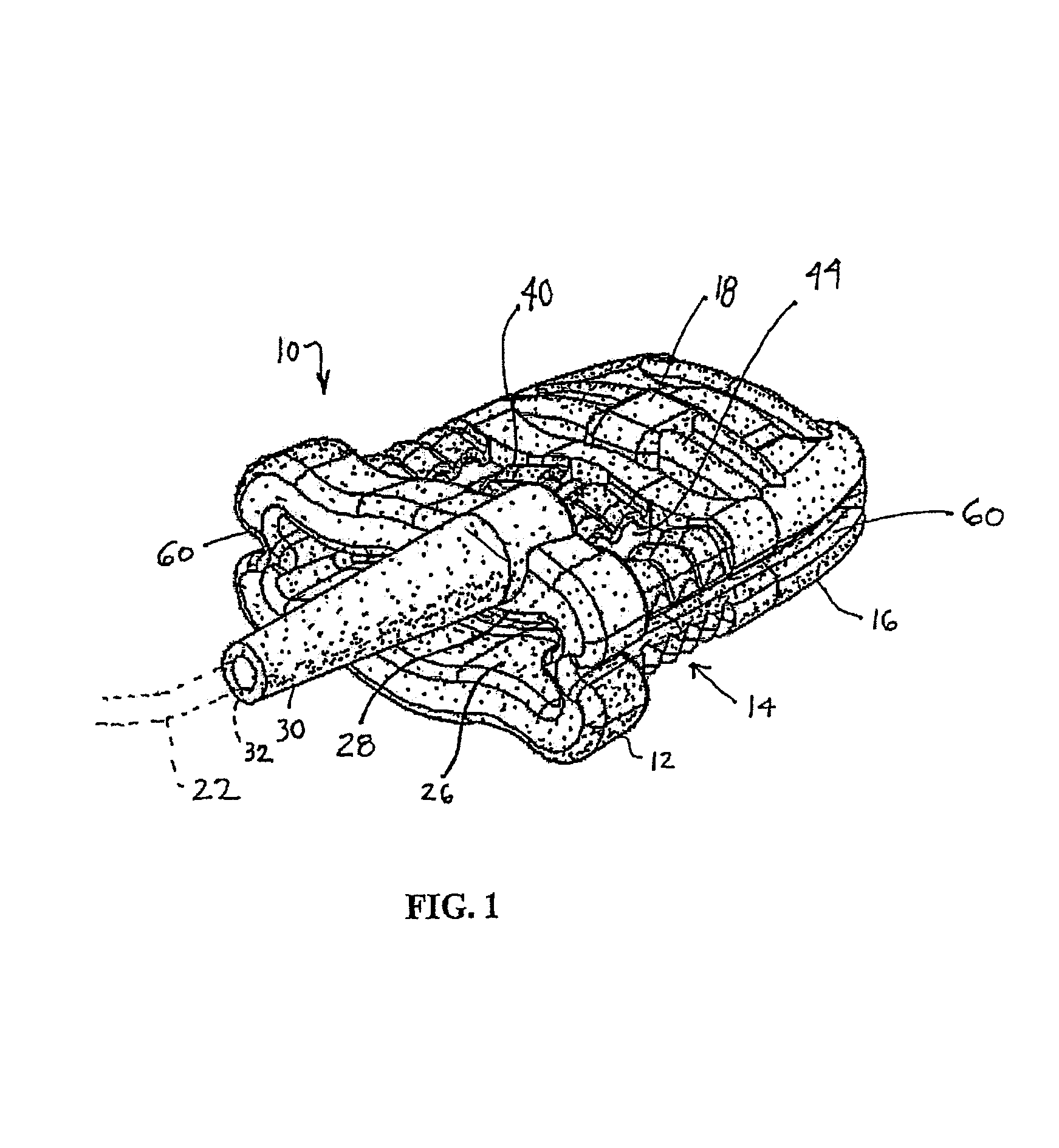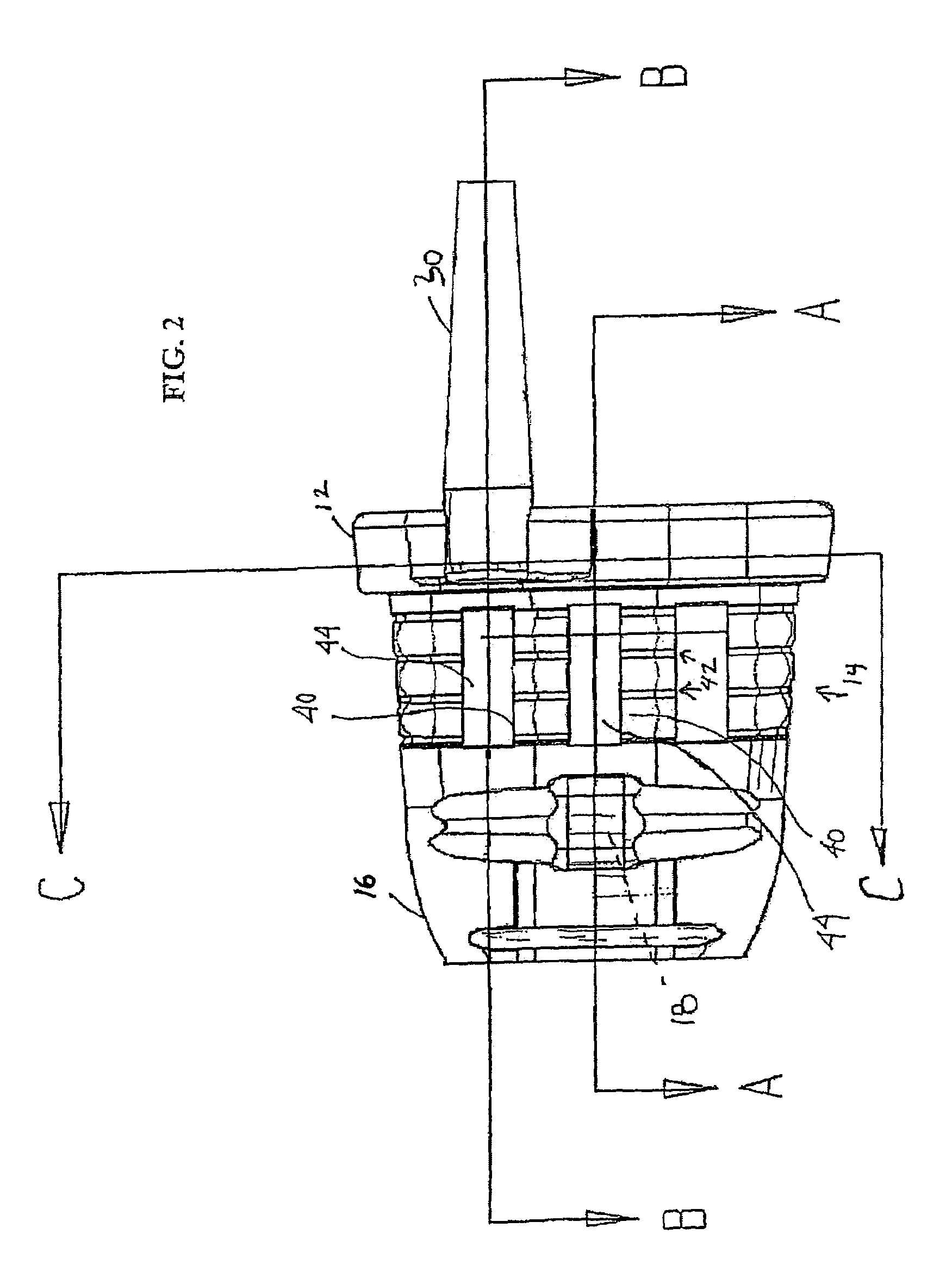Sensor assembly
a sensor and fingertip technology, applied in the field of fingertip sensors, can solve the problems of fingertip sensors easily falling off, springs are intentionally relatively weak, and pressure exerted by them, and achieve the effect of improving mechanical isolation
- Summary
- Abstract
- Description
- Claims
- Application Information
AI Technical Summary
Benefits of technology
Problems solved by technology
Method used
Image
Examples
Embodiment Construction
[0027]In one embodiment of the present invention, as shown in FIGS. 1-6, a finger sensor assembly 10 is provided which mechanically isolates the sensor elements relative to other portions of the sensor assembly 10 in order to minimize inadvertent displacement of the sensor elements caused by external forces. For the purposes of explanation only, the present invention is disclosed utilizing an embodiment that is configured for the measurement of oxygen saturation through known oximetric transmittance techniques. As one skilled in the art can readily appreciate, the present invention is easily adaptable to accommodate a number of different physiological monitoring applications and configurations, including but not limited to, other optical sensors, reflective sensor, etc.
[0028]FIG. 1 illustrates an embodiment of the assembly 10 adapted as an electro-optical sensor for a fingertip. In the illustrated embodiments, sensor assembly 10 is utilized within a system including a monitoring uni...
PUM
 Login to View More
Login to View More Abstract
Description
Claims
Application Information
 Login to View More
Login to View More - R&D
- Intellectual Property
- Life Sciences
- Materials
- Tech Scout
- Unparalleled Data Quality
- Higher Quality Content
- 60% Fewer Hallucinations
Browse by: Latest US Patents, China's latest patents, Technical Efficacy Thesaurus, Application Domain, Technology Topic, Popular Technical Reports.
© 2025 PatSnap. All rights reserved.Legal|Privacy policy|Modern Slavery Act Transparency Statement|Sitemap|About US| Contact US: help@patsnap.com



